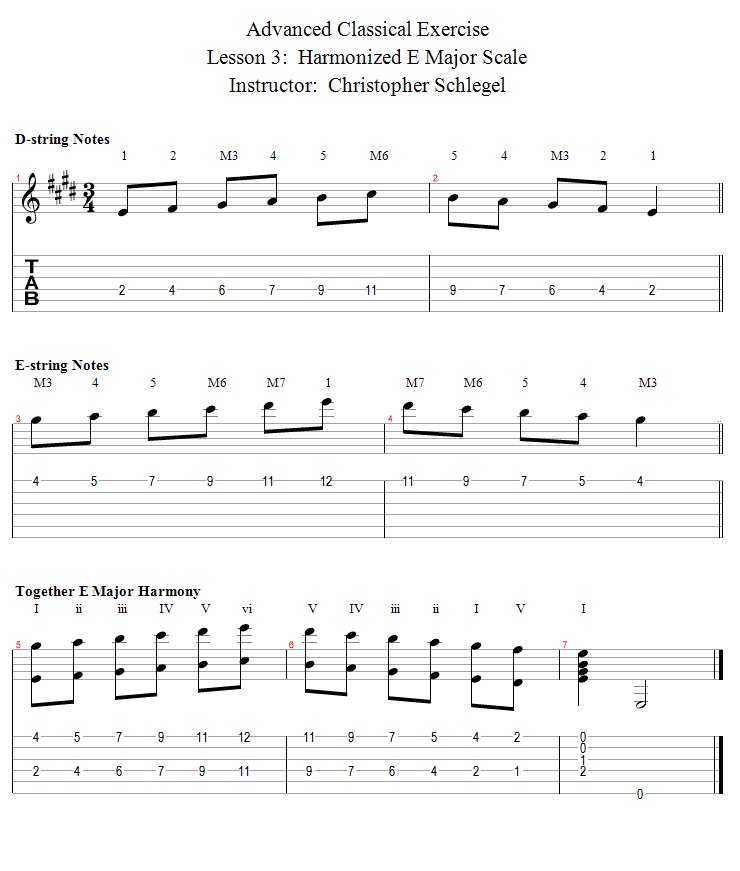- Advanced Classical Exercise: Intro
- Fingerpicking Pattern
- Harmonized E Major Scale
- E Major Exercise 1
- E Major Exercise 2
- Harmonized E Minor Scale
- E Minor Exercise 1
- E Minor Exercise 2
- Harmonized C Major Scale
- C Major Exercise 1
- C Major Exercise 2
- Harmonized C Minor Scale
- C Minor Exercise 1
- C Minor Exercise 2
- Advanced Classical Exercise: Conclusion
Harmonized E Major Scale
In this lesson we add the fretting hand. Remember, we will use the same right hand picking motions we learned in the previous lesson.
To add melodic interest to the exercise we will play notes from the E major scale. Notice that instead of having to change strings as the melody goes up and down, we simply move up and down the fretboard staying on the the same sets of strings throughout. This also makes it easier to visually see the intervals of the major scale in a linear pattern.
To add harmonic interest we'll harmonize the melody an octave higher than a major 3rd on the high E string. By doing this and you can literally see the intervals of the major scale, the scale degrees and the harmony of a third. This can help you literally see how the intervals of the major scale played together in harmony create the resultant major scale harmonic structure: a chord built on the first notes of the major scale is a major chord, a chord built on the second note of the major scale is a minor chord.
The Roman numeral system is typically used to show this: "I" is the "one chord", "ii" is the "two chord" and so on; upper case Roman numerals for Major chords and lower case for minor chords.
I - one chord - Major
ii - two chord - minor
iii - three chord - minor
IV - four chord - Major
V - five chord - Major
vi - six chord - minor
vii - seven chord - diminished
This can help you literally see how the intervals of the major scale played together in harmony create the resultant major scale harmonic structure: a chord built on the first notes of the major scale is a major chord, a chord built on the second note of the major scale is a minor chord.
In the next lessons we'll apply our finger picking patterns we learned the previous lesson to these harmonized diads along with rhythmically alternating to the open B string pedal notes.

- Styles:
-
- Difficulty:
-

